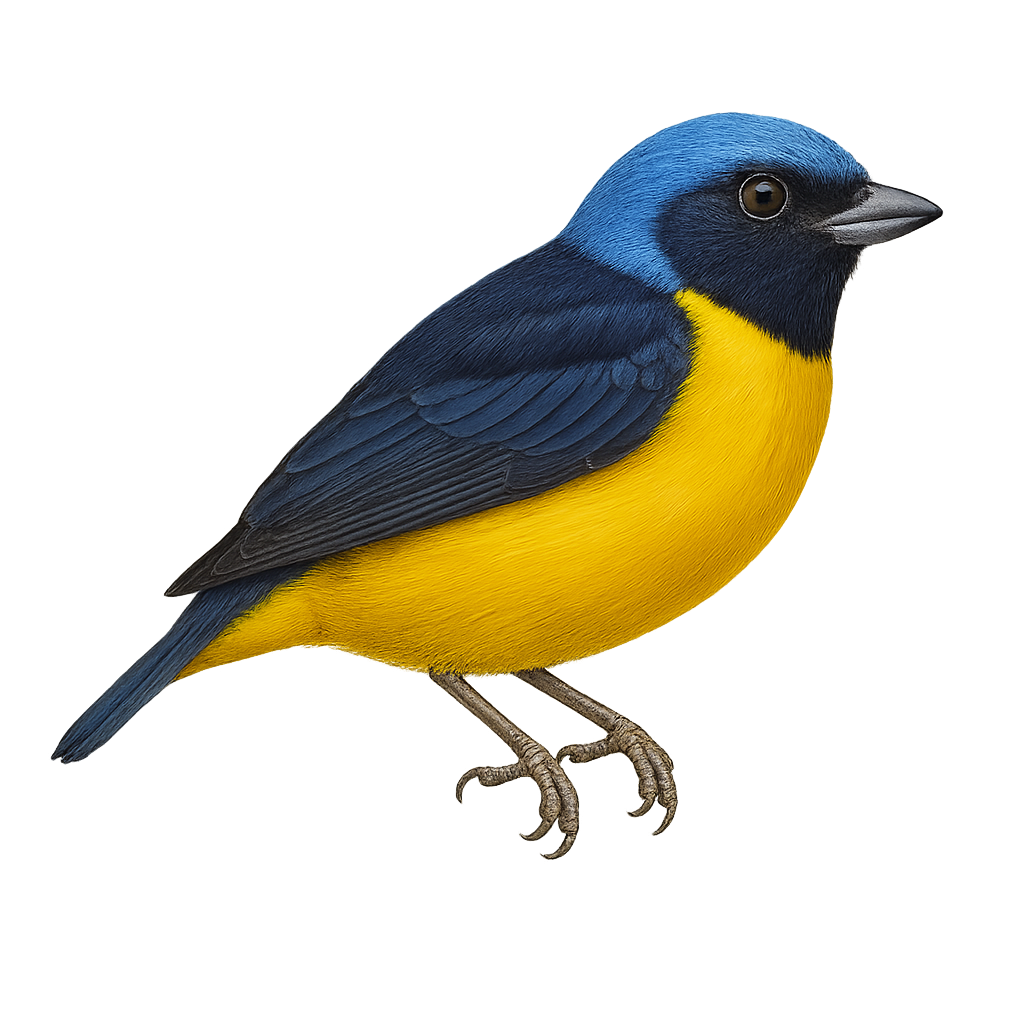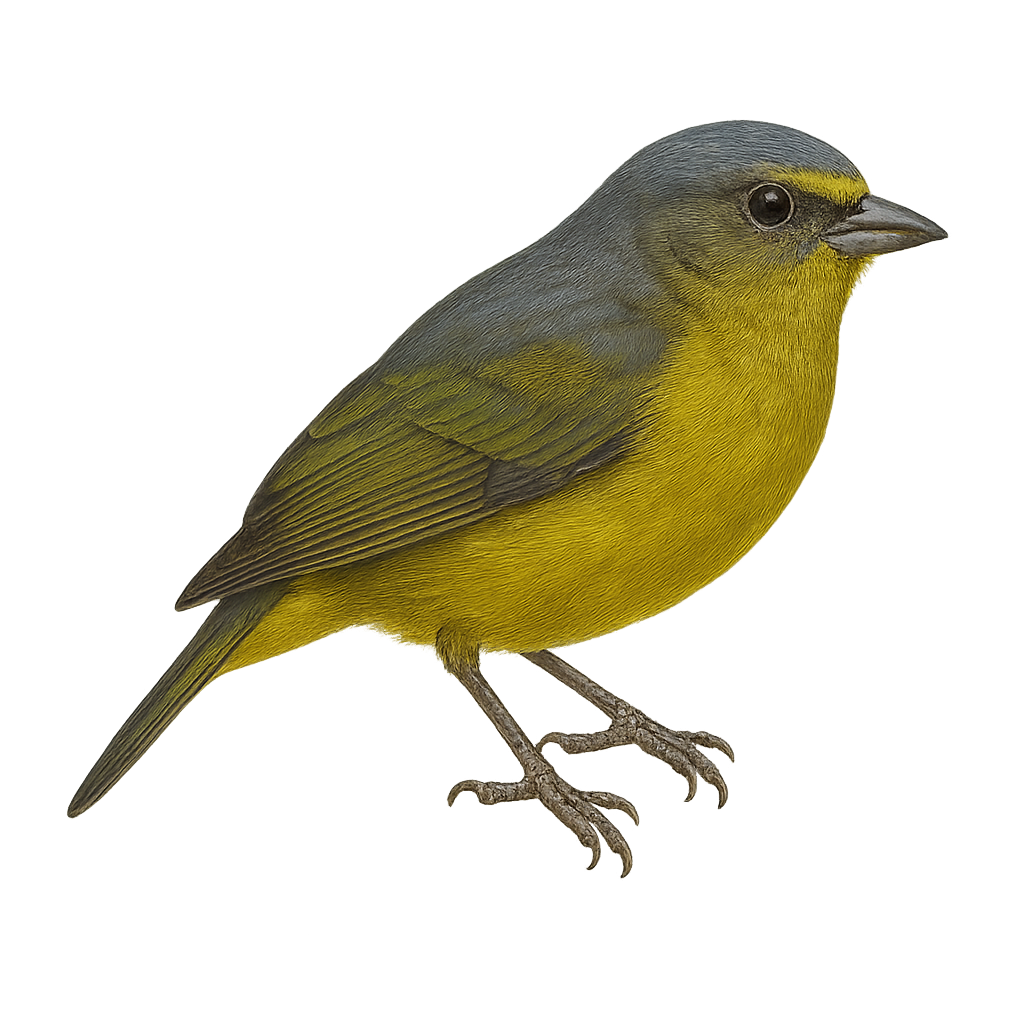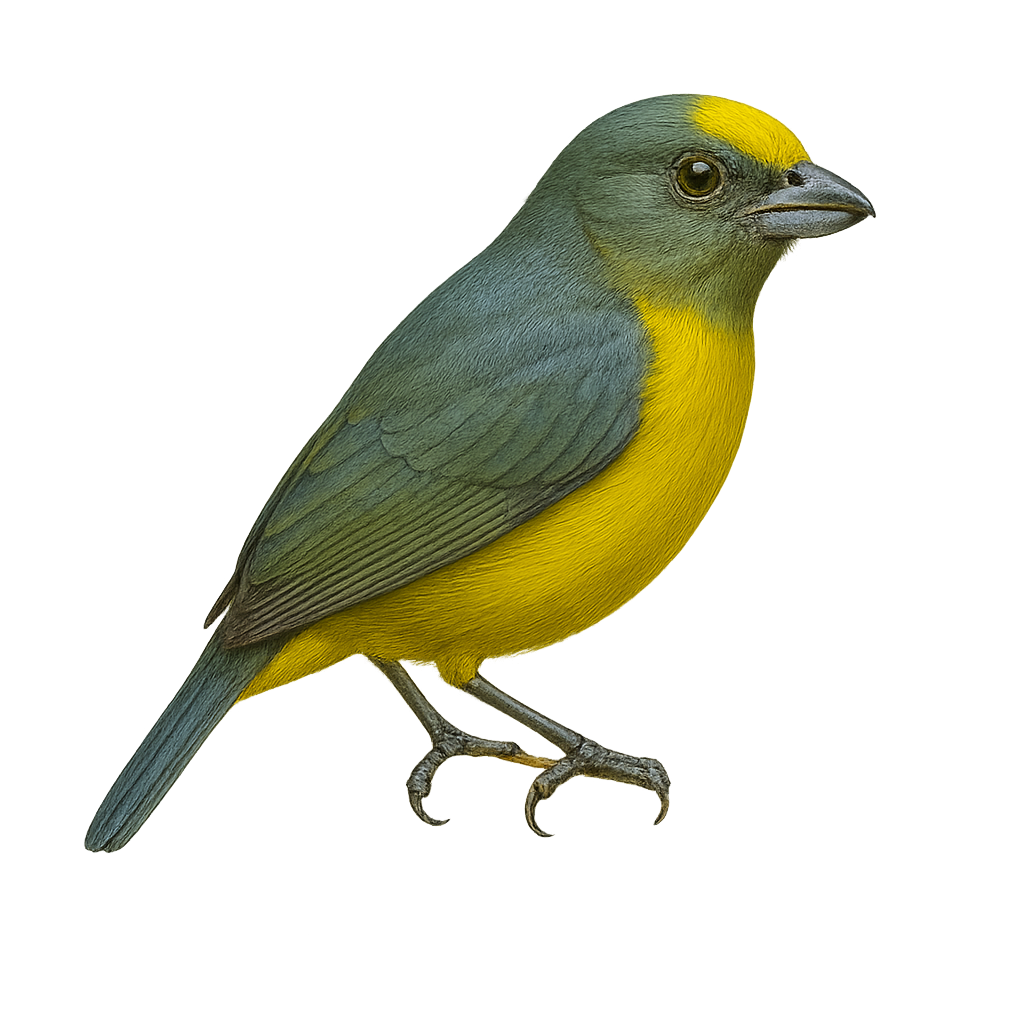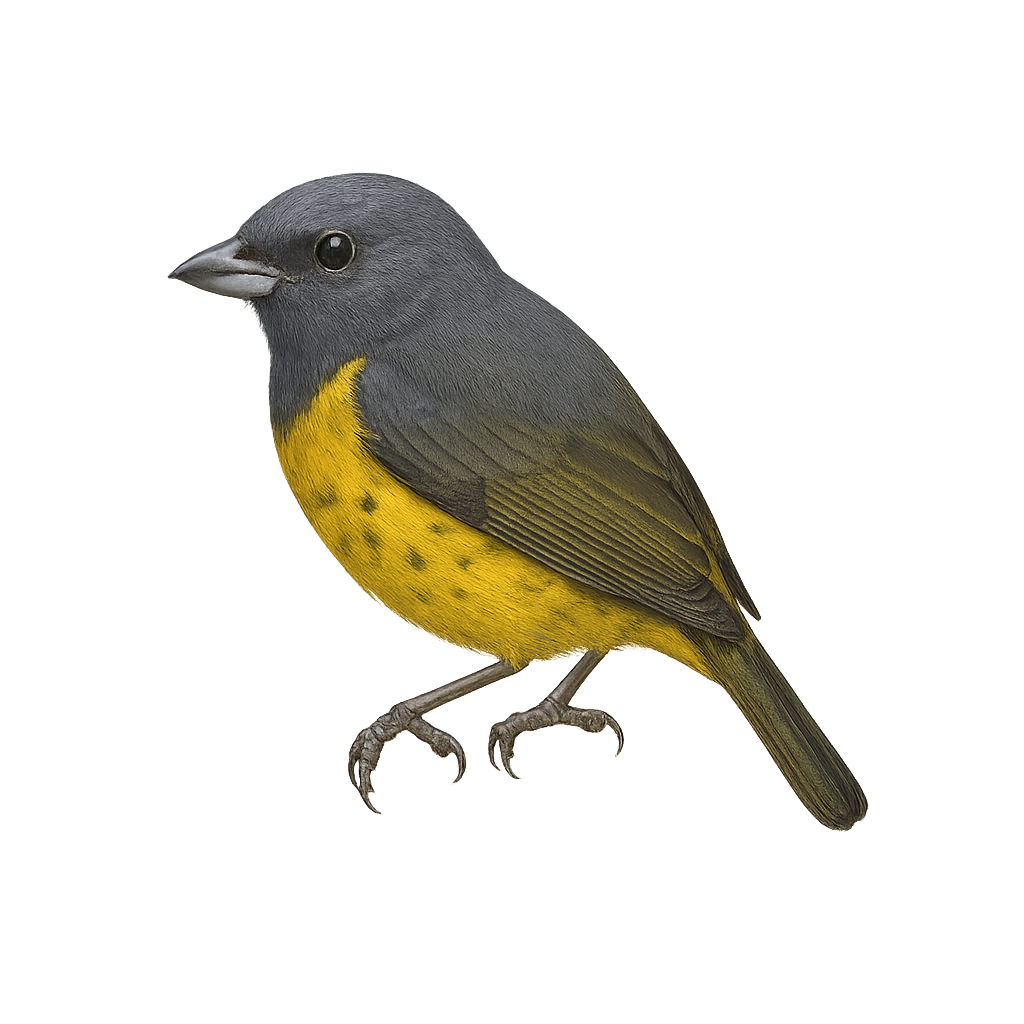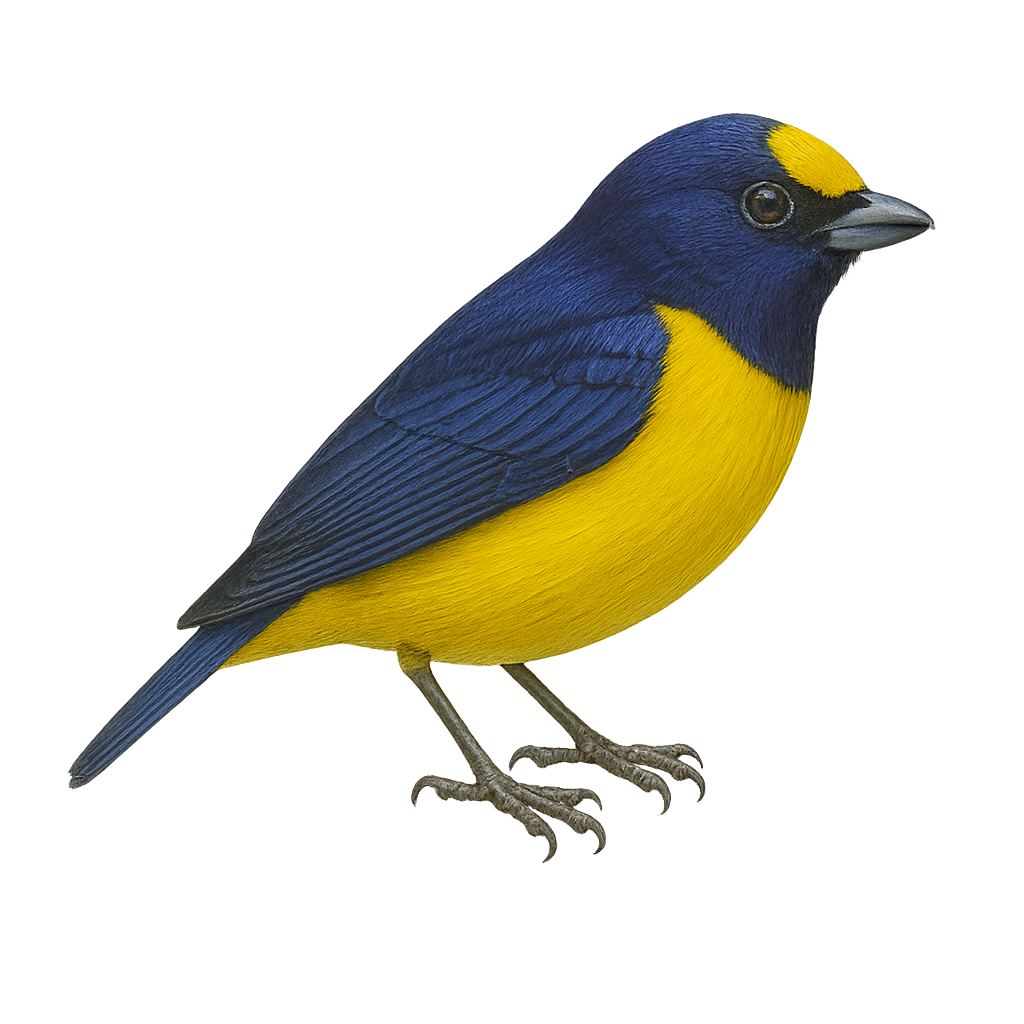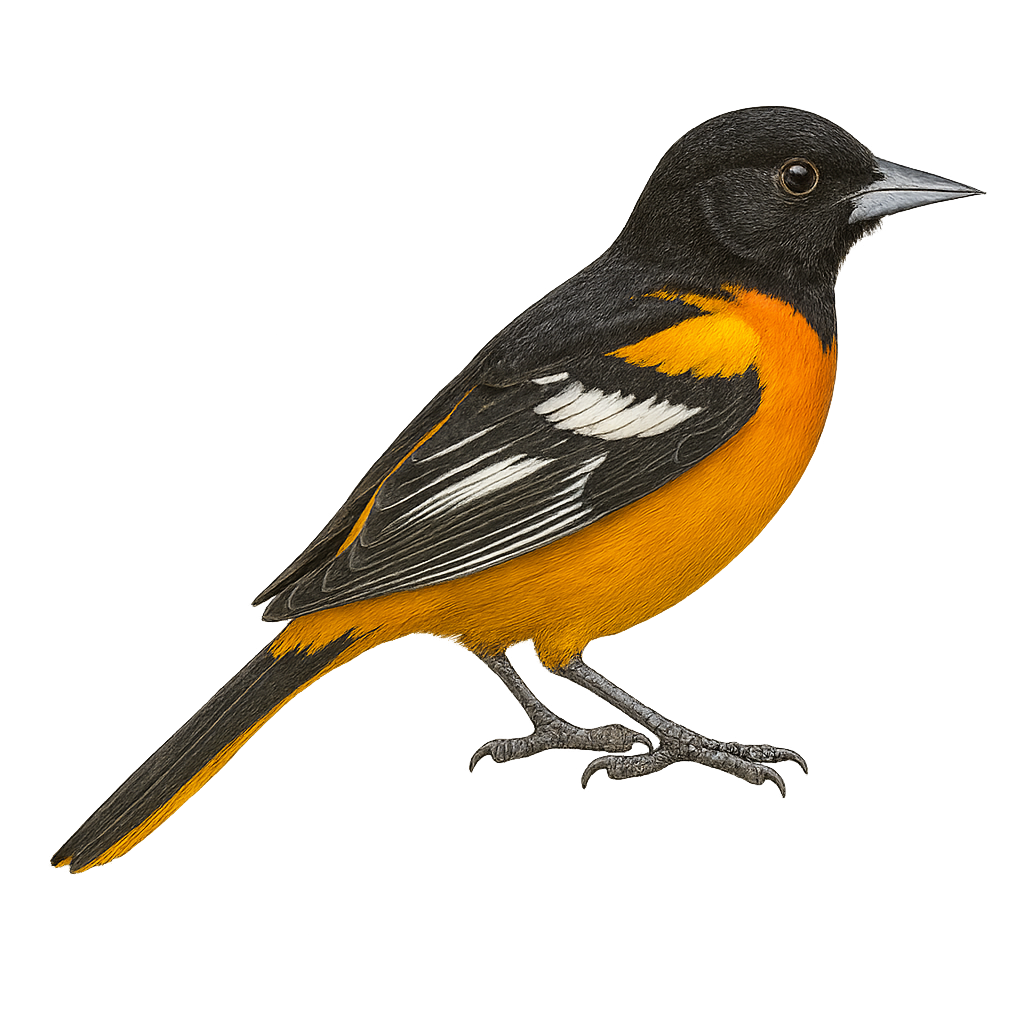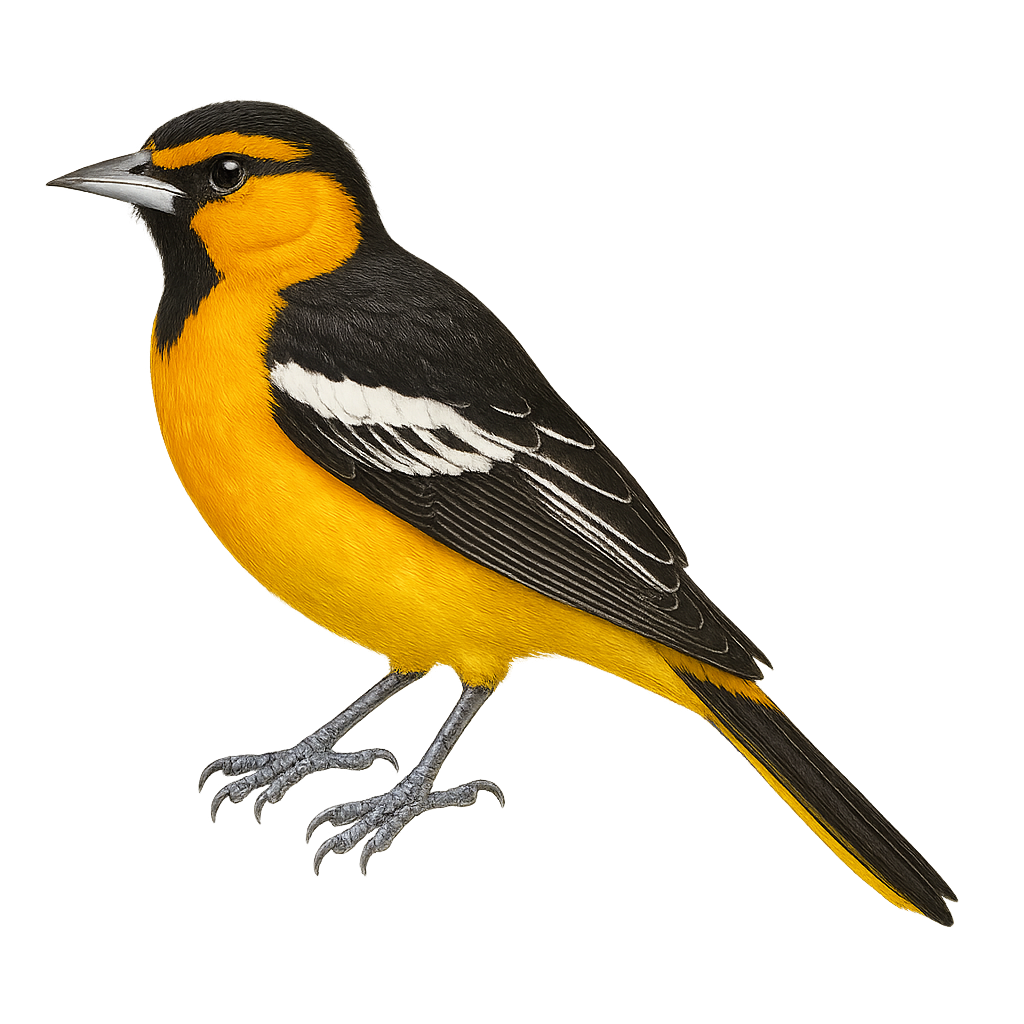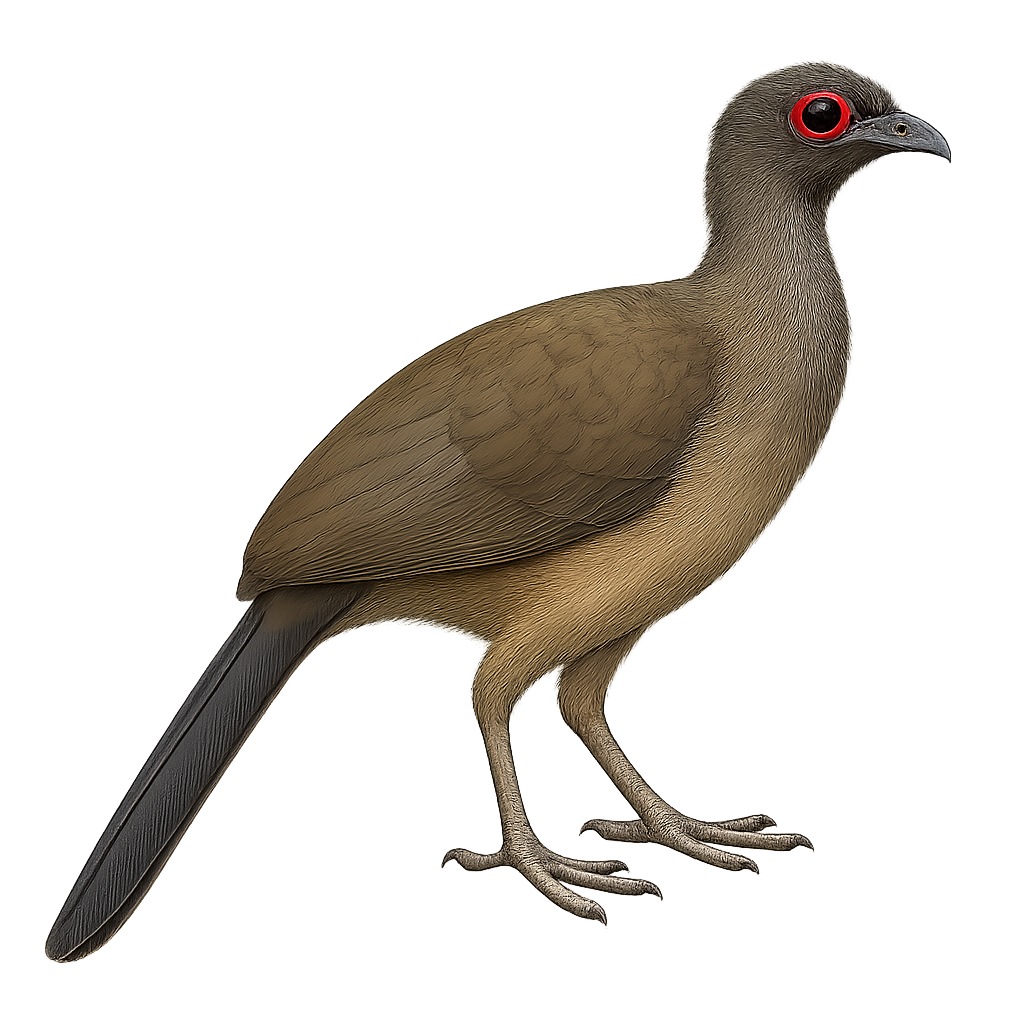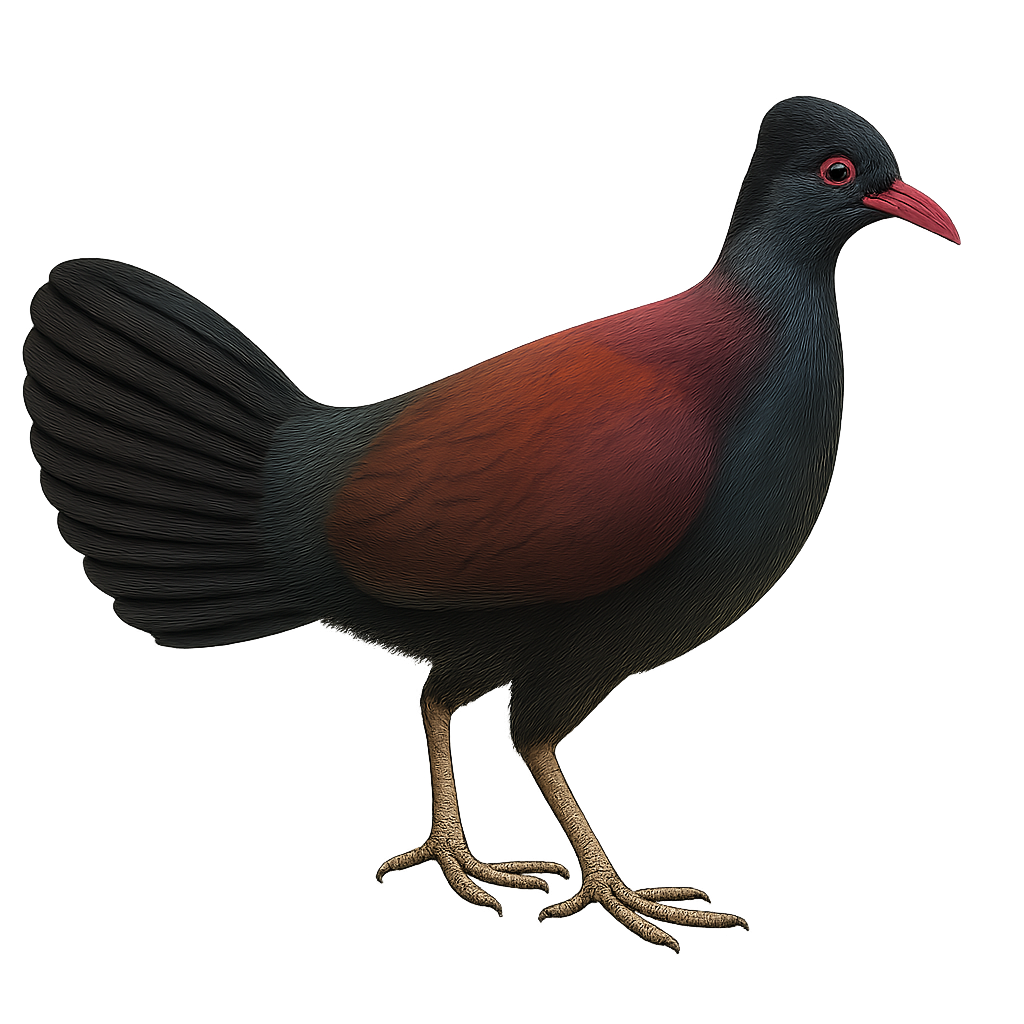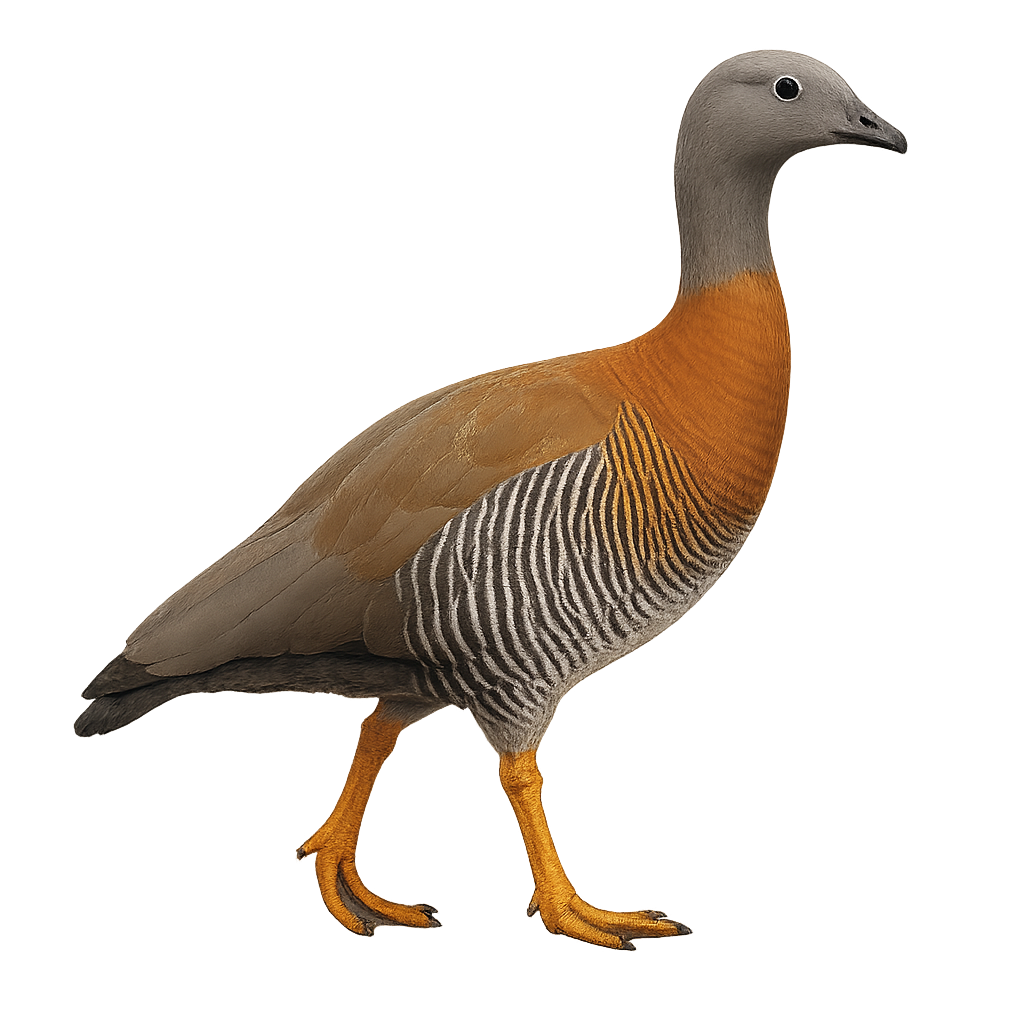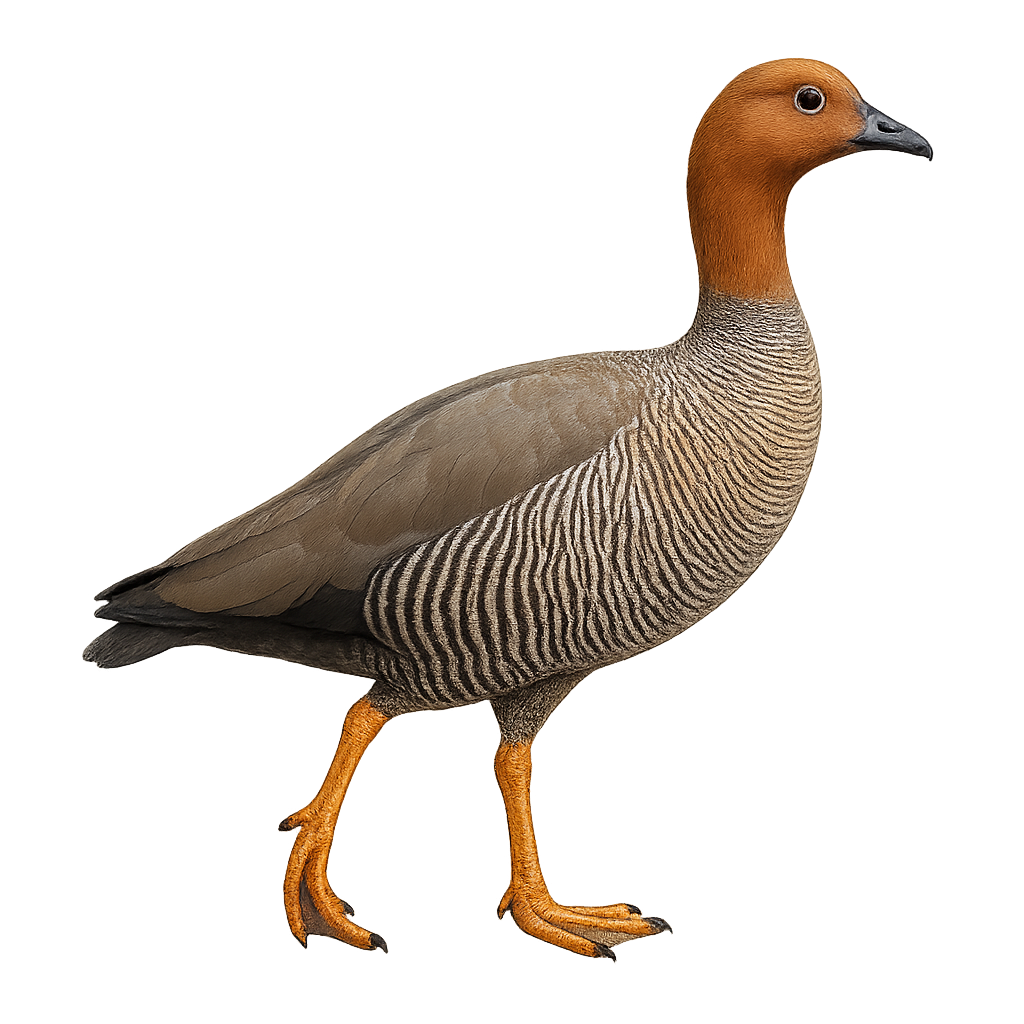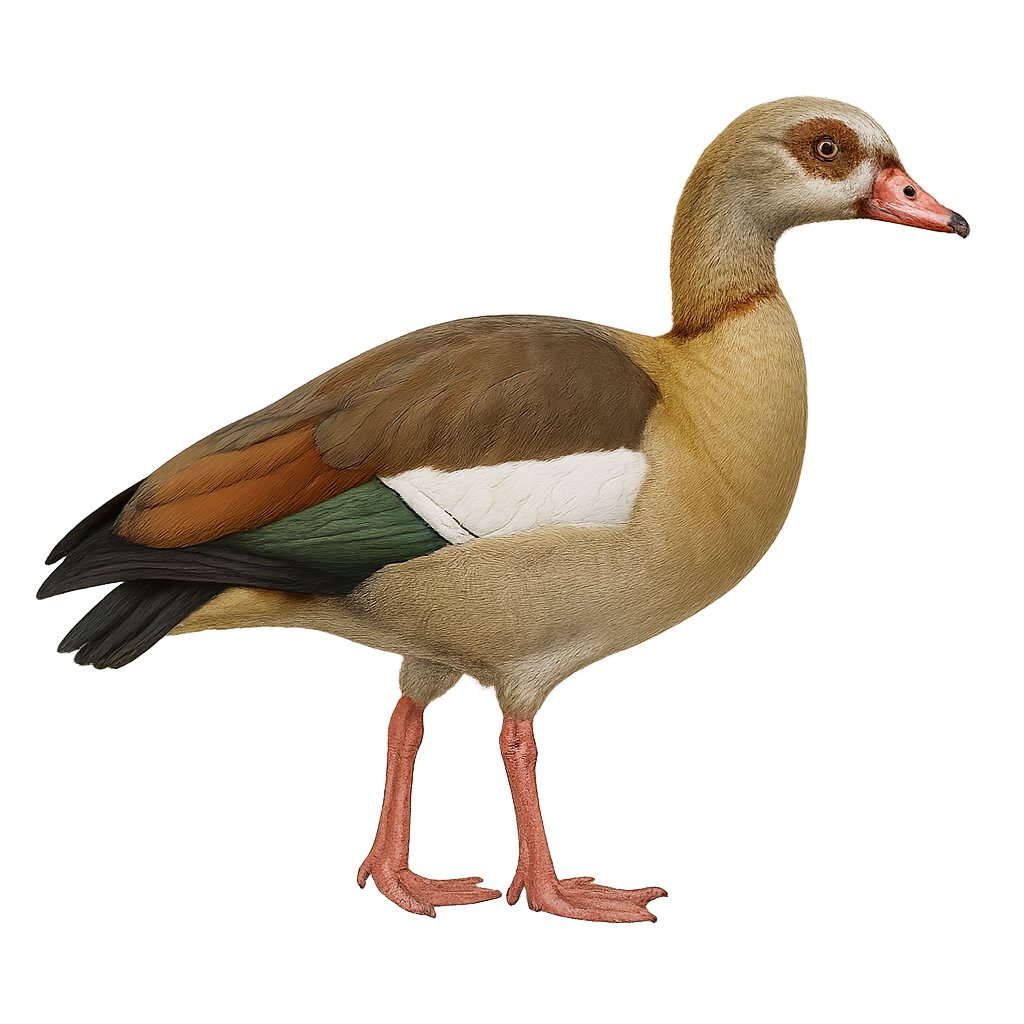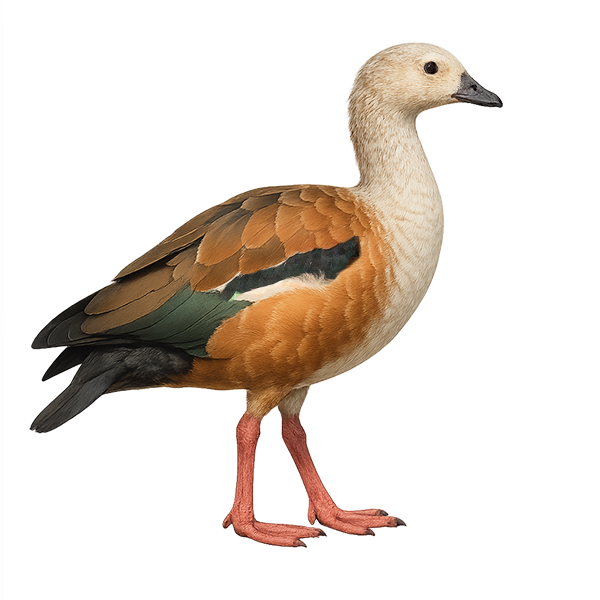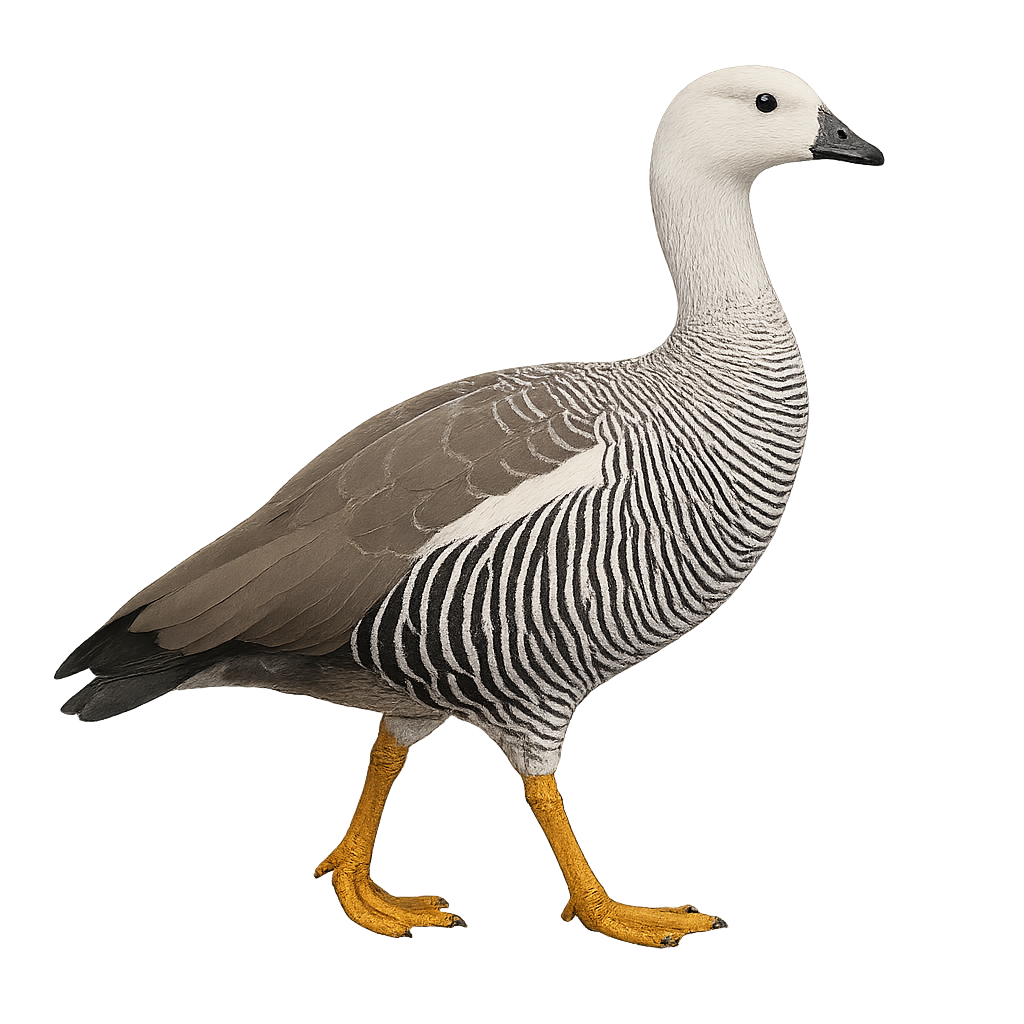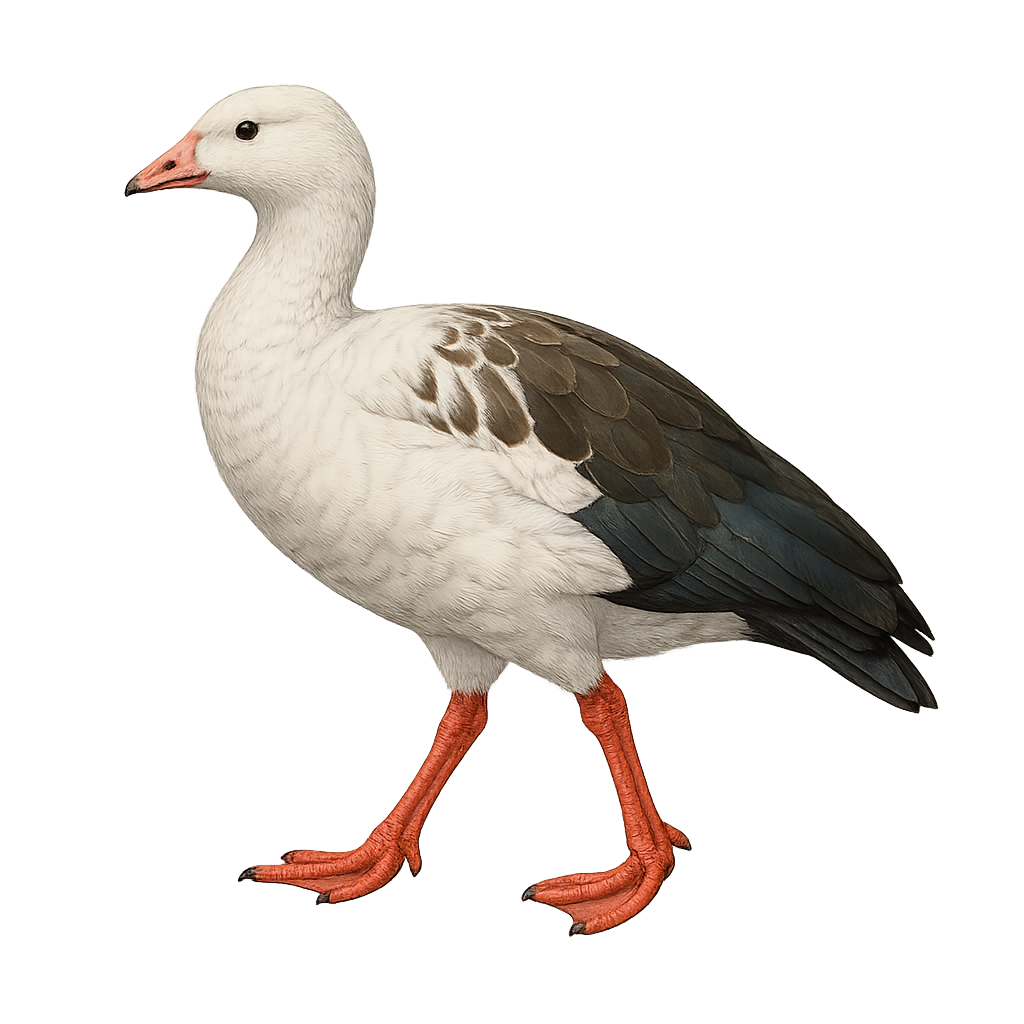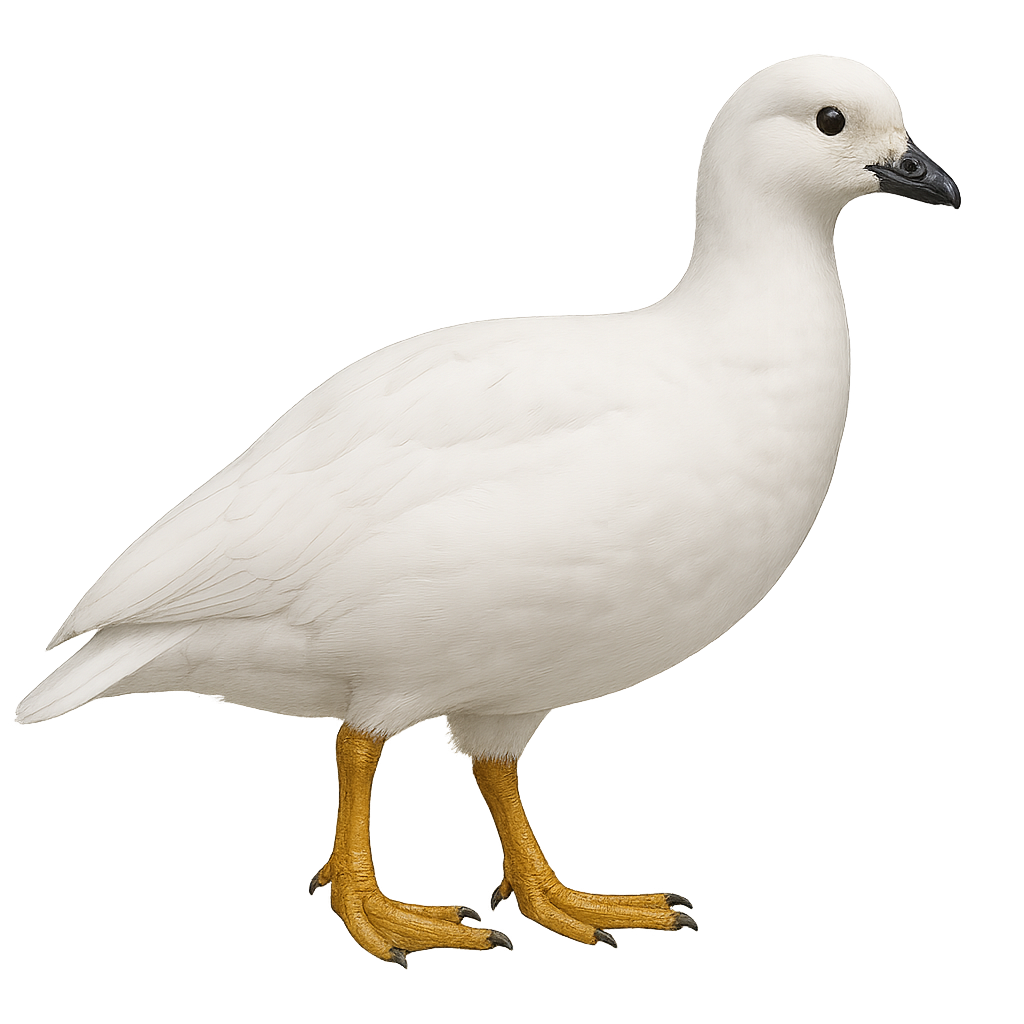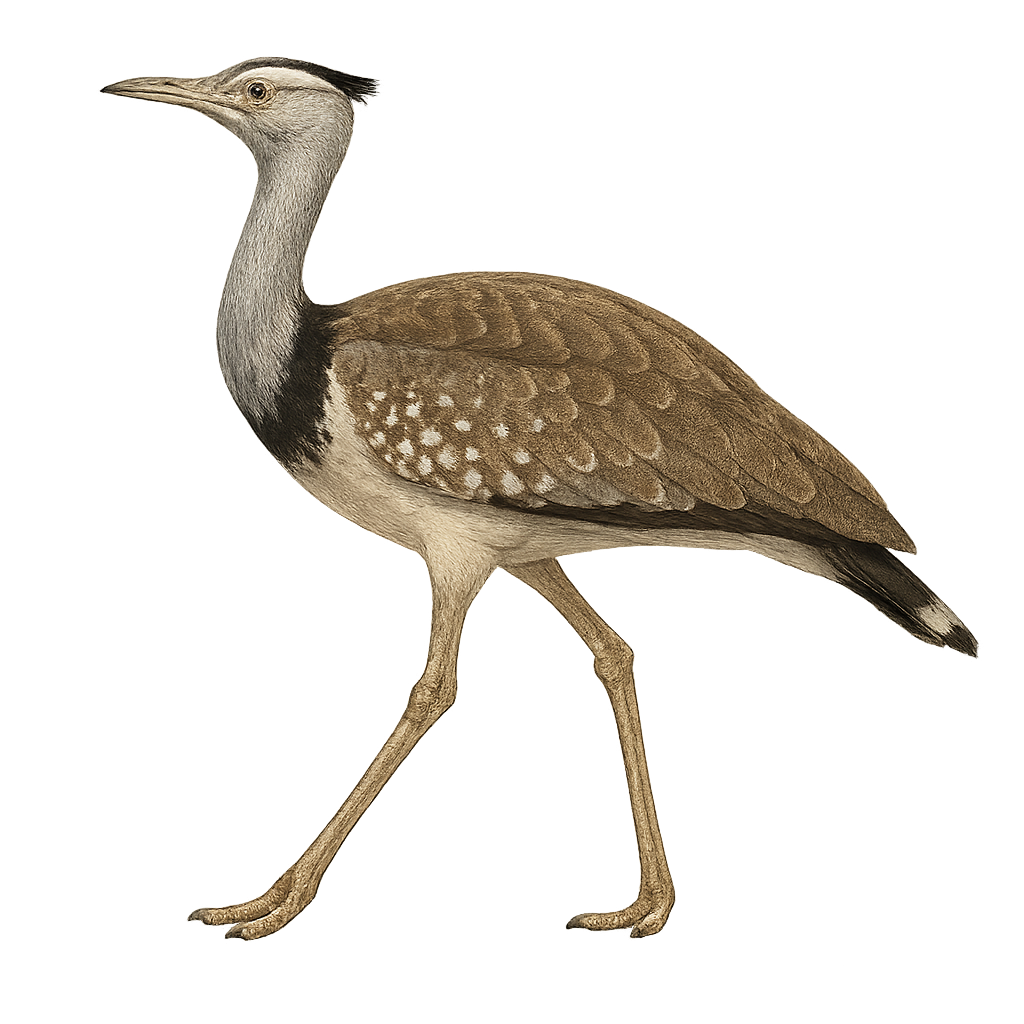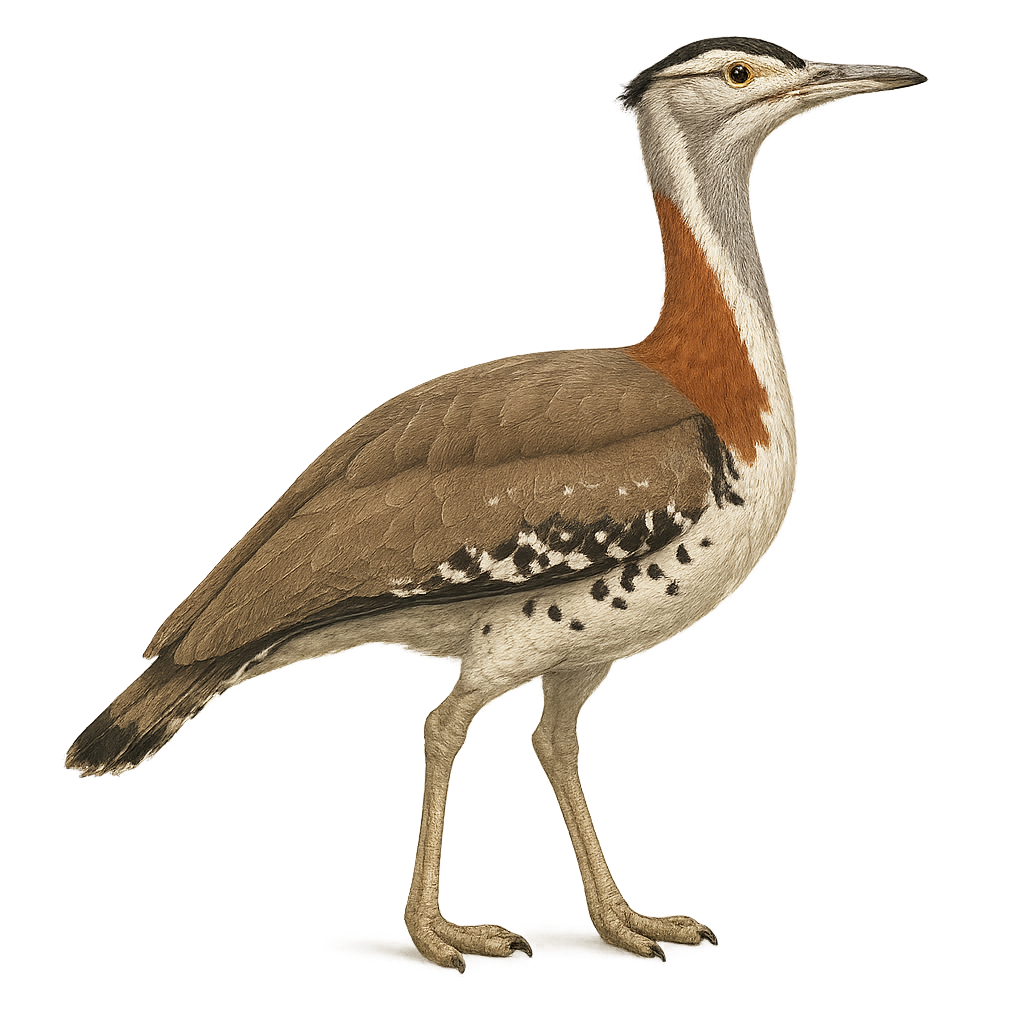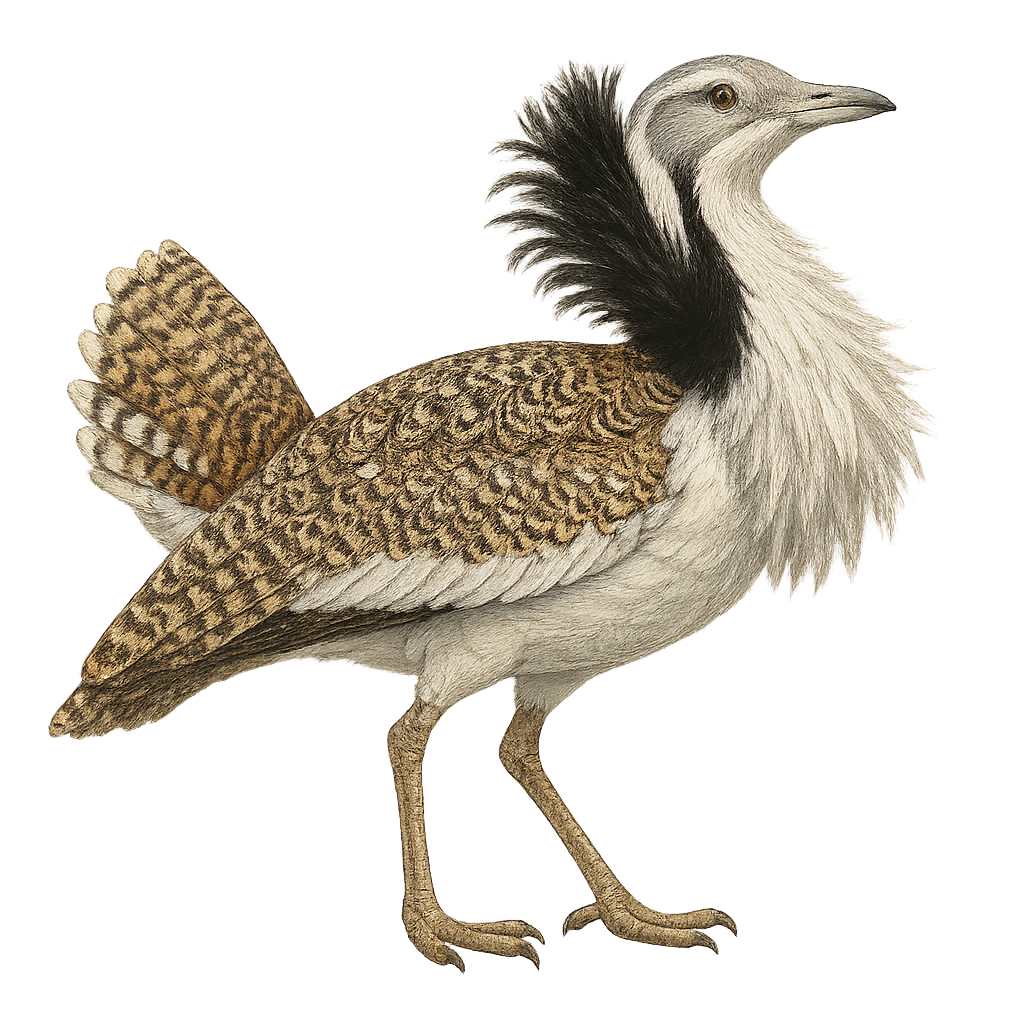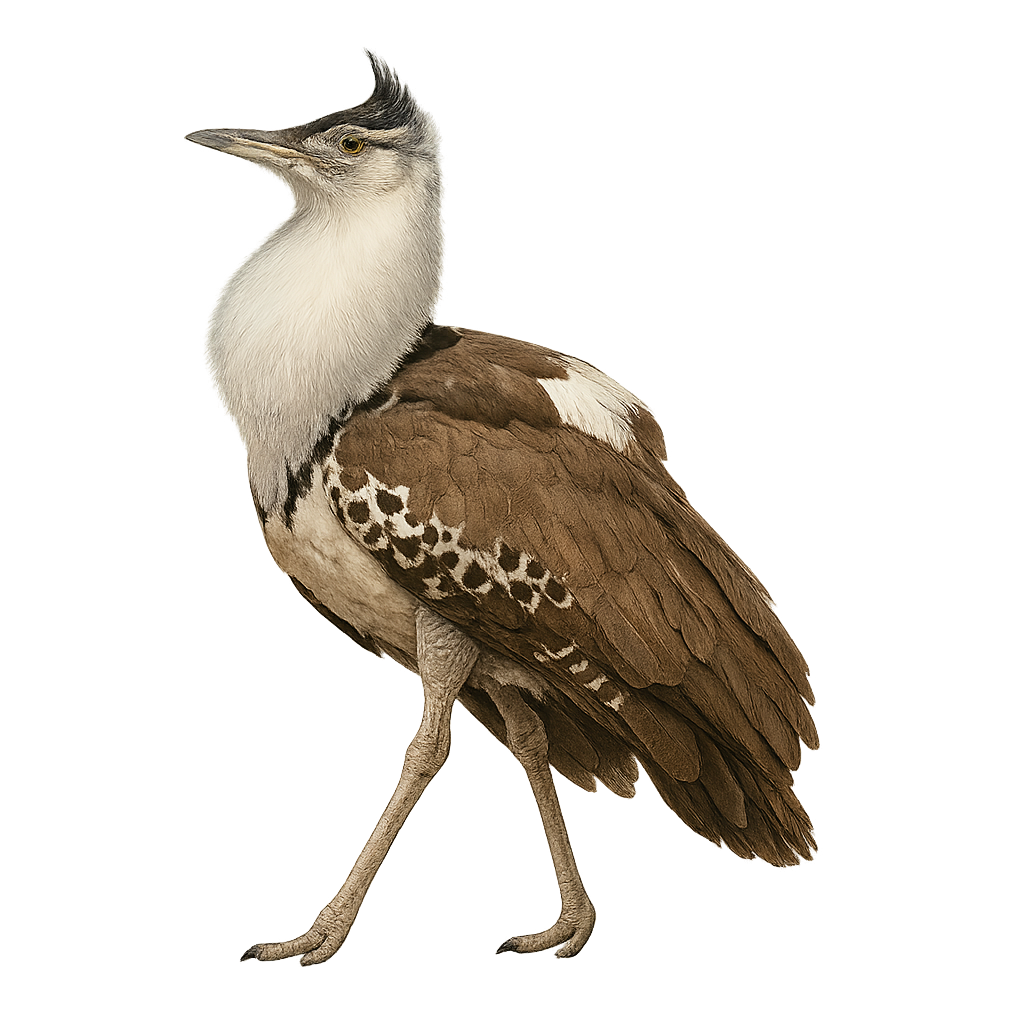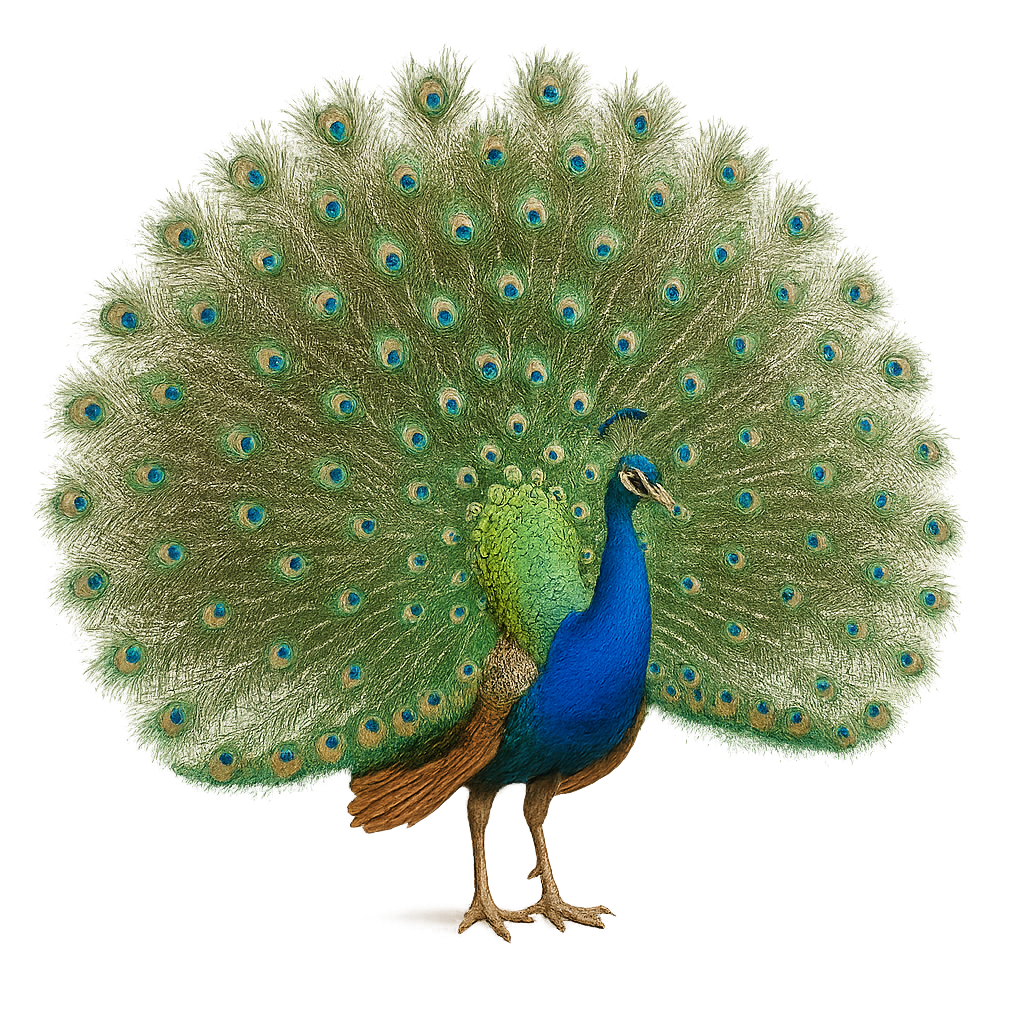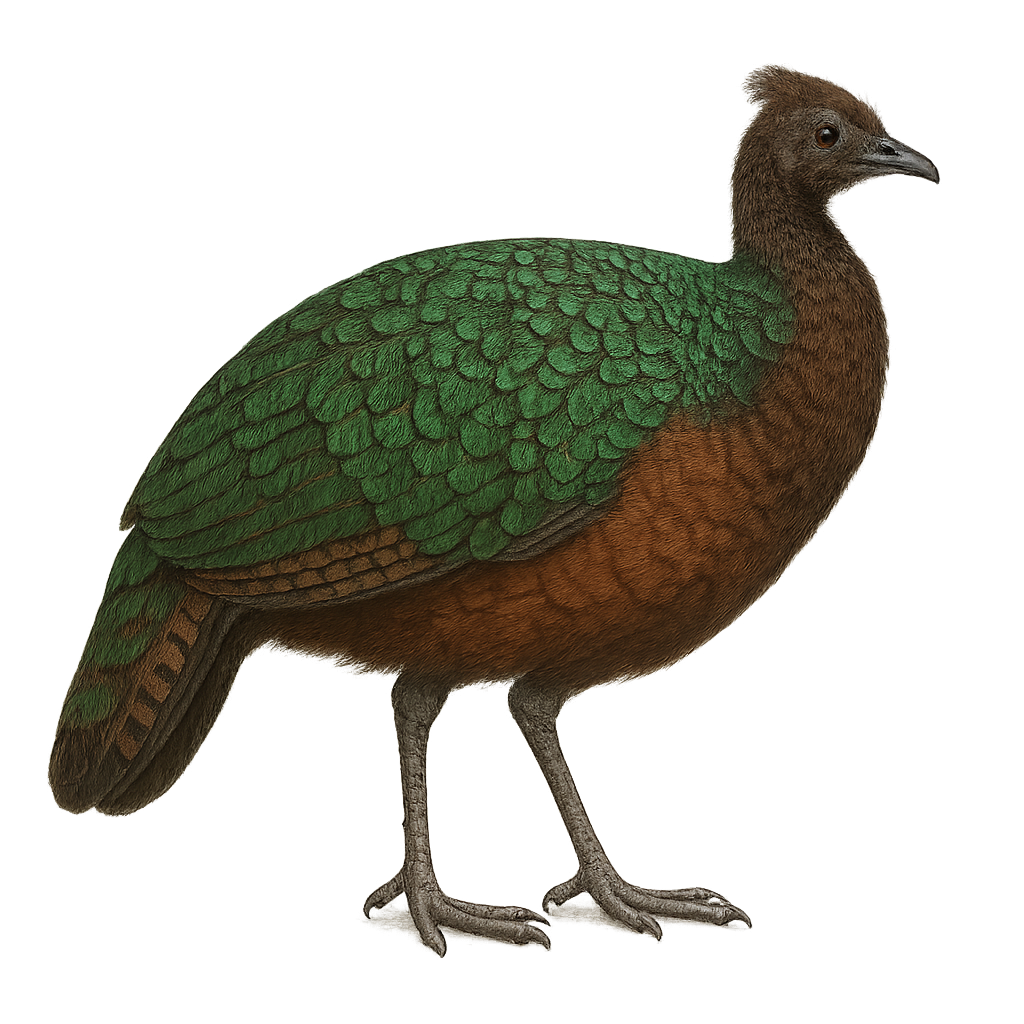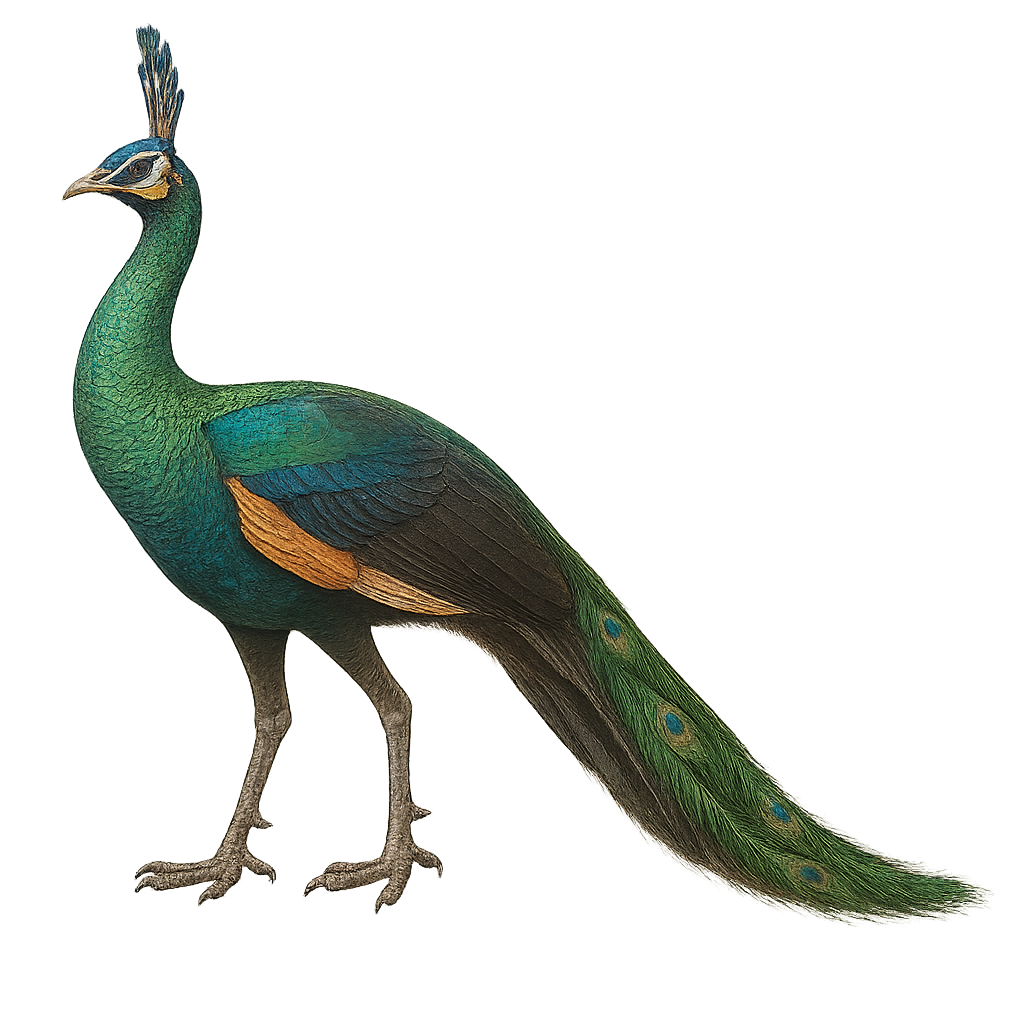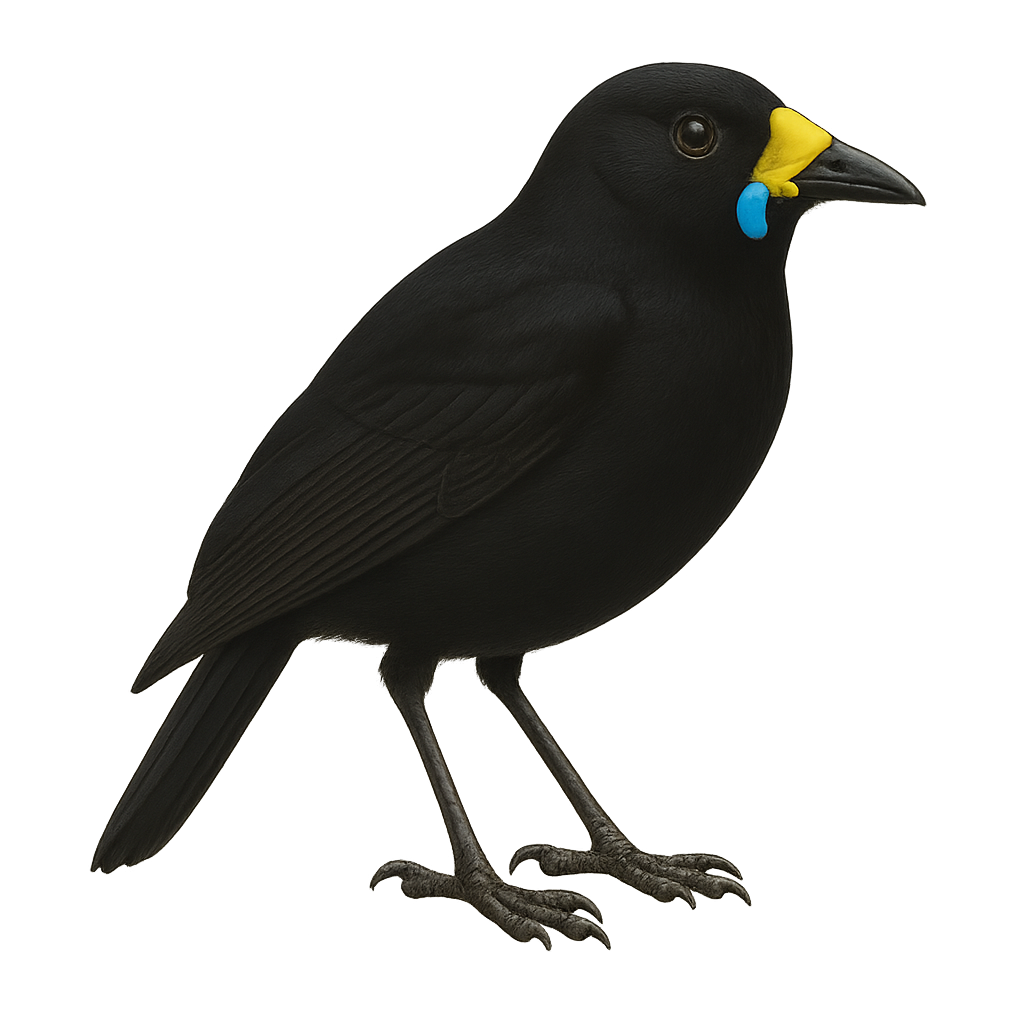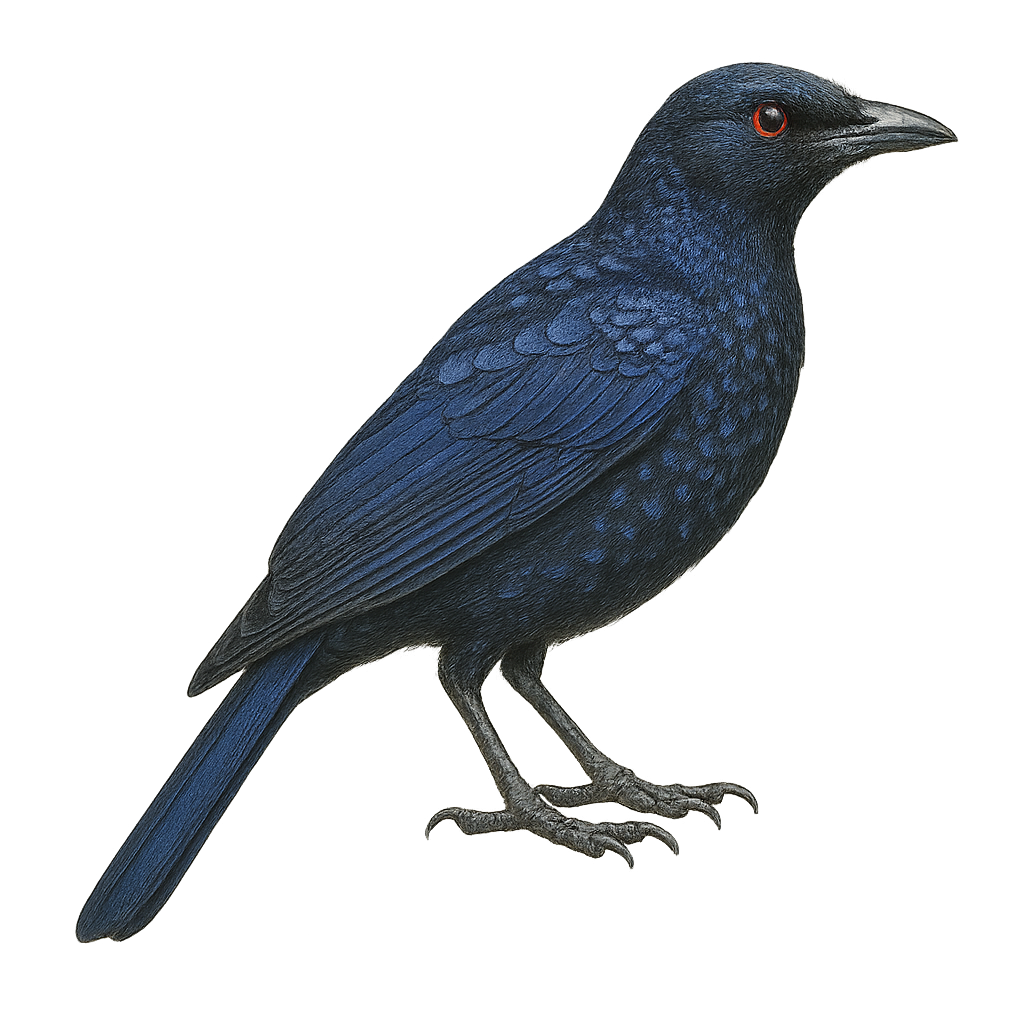The Golden-rumped Euphonia, or Chlorophonia cyanocephala, is a small, colorful bird belonging to the Fringillidae family. It is characterized by its bright blue head, olive-green back, and vibrant yellow belly. Males have a distinctive golden patch on the rump, which gives them their English name. Females are duller in color, predominantly olive-green. This bird measures about 11 cm in length and weighs between 10 and 14 grams. It is primarily found in the tropical rainforests and wooded areas of Central and South America, where it feeds on fruits, berries, and insects. Its melodious and varied song is often heard in the canopy.
The Golden-rumped Euphonia, or Euphonia mesochrysa, is a small, colorful bird found primarily in the humid forests and wooded areas of South America, notably in Colombia, Ecuador, and Peru. This bird is recognizable by its vibrant plumage, with a golden-yellow belly contrasting with a dark blue back. Males and females exhibit differences in coloration, with females generally being duller. They primarily feed on fruits but can also consume insects. Their song is melodious and complex, often heard at dawn. These birds are social and can be observed in small groups. Although they are quite widespread, their habitat is threatened by deforestation.
The Olive-backed Euphonia, or Euphonia gouldi, is a small, colorful bird from the Fringillidae family, primarily found in the humid tropical forests of Central America. It is distinguished by its vibrant plumage, with an olive-green back and bright yellow chest. Males have a metallic blue cap, while females display duller tones. This bird is often seen in pairs or small groups, feeding mainly on fruits and berries. Its melodious and varied song is often heard at dawn and dusk. Although its habitat is threatened by deforestation, the species is currently classified as of least concern by the IUCN.
The Plumbeous Euphonia is a small, colorful bird native to the tropical forests of Central and South America. It is characterized by its blue-gray back and bright yellow belly. Males have a dark blue cap, while females display duller tones. This bird measures about 10 cm in length and weighs between 10 and 15 grams. Often seen in pairs or small groups, it primarily feeds on fruits and berries. Its song is melodious, consisting of soft, repetitive notes. The Plumbeous Euphonia plays a crucial role in seed dispersal, aiding forest regeneration.
The Violaceous Euphonia, or Euphonia violacea, is a small, colorful bird from the Fringillidae family, predominantly found in South America. It is characterized by its vibrant plumage, with a blue-violet back and bright yellow belly. Males display more vivid colors than females, who are generally duller. This bird is often seen in tropical rainforests, forest edges, and wooded areas. It primarily feeds on fruits but can also consume insects and seeds. The Violaceous Euphonia is known for its melodious song, often heard at dawn and dusk.
The Baltimore Oriole, Icterus galbula, is a medium-sized songbird known for its striking plumage. The male boasts vibrant colors with a bright orange body and black wings, while the female is more subdued with shades of yellow and brown. This bird is often seen in open forests, parks, and gardens across North America, feeding mainly on insects, fruits, and nectar. Its melodious song is a distinctive feature of its presence. A migratory species, it winters in Central and South America. The Baltimore Oriole plays a crucial role in pollination and insect population control.
The Bullock's Oriole is a colorful songbird found primarily in the western United States. It is easily recognizable by its bright plumage: males display a striking mix of black, bright orange, and white, while females are more subdued with shades of yellow and gray. This bird prefers open habitats such as deciduous forests, orchards, and riparian areas. It feeds mainly on insects, fruits, and nectar. During the breeding season, the Bullock's Oriole builds hanging nests in trees, often at the tips of branches. Although its song is melodious, it is often difficult to spot due to its wary behavior.
The Plain Chachalaca, or Ortalis vetula, is a medium-sized bird belonging to the Cracidae family. It is primarily found in dry forests and wooded areas of Mexico and Central America. This bird is recognizable by its olive-brown plumage, long tail, and distinctive call, often described as a "cha-cha-lac". Chachalacas live in family groups and are known for their noisy and social behavior. They primarily feed on fruits, leaves, and flowers. Although their habitat is threatened by deforestation, they are still widespread and not considered endangered.
The Colombian Chachalaca is a medium-sized bird, measuring about 50 to 60 cm in length. It features an olive-brown plumage with lighter shades on the belly and a long, rounded tail. This bird is often seen in small groups in the tropical and subtropical forests of Colombia, where it primarily feeds on fruits, leaves, and flowers. Although its flight is somewhat clumsy, it can move swiftly through dense vegetation. The Colombian Chachalaca plays an important role in seed dispersal, thus aiding forest regeneration. It is also known for its loud vocalizations, often heard at dawn and dusk.
The West Mexican Chachalaca, scientifically known as Ortalis poliocephala, is a medium-sized bird belonging to the Cracidae family. It is primarily endemic to the tropical regions of Mexico. This bird is distinguished by its grey head contrasting with its olive-brown body. Chachalacas are often observed in noisy groups, feeding on fruits, leaves, and flowers in dry forests and wooded areas. They are known for their distinctive and loud call, often heard at dawn and dusk. Although they are relatively tolerant of human presence, they prefer dense habitats where they can easily hide. Their social behavior and adaptability to various habitats make them an interesting subject of study for ornithologists.
The Pheasant Pigeon, or Otidiphaps nobilis, is a fascinating bird native to the tropical forests of New Guinea. It is distinguished by its metallic green plumage and a head adorned with a white crest. Measuring about 40 cm in length, it has a robust body and strong legs, adapted to its terrestrial lifestyle. Although primarily ground-dwelling, it can fly short distances. Its diet mainly consists of fruits, seeds, and insects. The Pheasant Pigeon is a discreet bird, often difficult to observe due to its suspicious behavior. It plays an important role in seed dispersal, thus contributing to the regeneration of its forest habitat.
The Blue-winged Goose, Cyanochen cyanoptera, is a bird species endemic to the Ethiopian highlands. It is characterized by its grey-brown plumage with bluish tints on the wings, giving it its name. This medium-sized bird, measuring about 70 to 80 cm in length, is often found near lakes and marshes. Its bill is black, and its legs are dark grey. The species is primarily herbivorous, feeding on grasses and aquatic plants. Although relatively discreet, it can be seen in small family groups. Habitat conservation is crucial, as it is classified as vulnerable due to the degradation of its natural environment.
The Ashy-headed Goose, or Chloephaga poliocephala, is a bird species belonging to the Anatidae family. It is primarily found in the southern regions of South America, particularly in Argentina and Chile. This bird is characterized by its ashy-gray head contrasting with its brown body and white wings. Males and females have similar plumage, although females are slightly smaller. The Ashy-headed Goose inhabits wet grasslands, marshes, and lake edges, where it feeds mainly on aquatic vegetation and grasses. It is often seen in pairs or small family groups. Although its conservation status is currently "least concern," it is sensitive to habitat degradation.
The Ruddy-headed Goose, or Chloephaga rubidiceps, is a bird species belonging to the Anatidae family. It is characterized by its reddish head and neck, contrasting with its grey body and black and white wings. This bird is mainly found in Patagonia, where it inhabits open grasslands and wetlands. Although it appears robust, it is relatively small compared to other goose species. Males and females are similar in appearance, with males being slightly larger. The Ruddy-headed Goose is known for its seasonal migrations, moving northward in winter. It primarily feeds on grasses and aquatic plants. Unfortunately, this species is threatened by habitat loss and predation by introduced species.
The Egyptian Goose, Alopochen aegyptiaca, is a medium-sized waterbird known for its distinctive brown, white, and black plumage, with red markings around the eyes. Native to sub-Saharan Africa, it has been introduced to various regions in Europe. It prefers habitats near freshwater, such as lakes, rivers, and marshes. This bird is often seen in pairs or small family groups. Although primarily herbivorous, it also feeds on insects and small invertebrates. The Egyptian Goose is known for its territorial behavior, especially during the breeding season. It is capable of adapting to various environments, which explains its growing presence in urban areas.
The Orinoco Goose, Oressochen jubatus, is a waterbird species typical of the wetlands and riverbanks of South America, especially in Venezuela, Colombia, and northern Brazil. It stands out with its warm brown plumage, pale head with a subtle crest, and striking red legs. A non-migratory resident, it breeds near sandy shores and flooded areas. Its diet is mainly vegetarian, feeding on seeds, shoots, and aquatic plants. Fairly wary, it usually takes flight when humans approach.
The Upland Goose, or Chloephaga picta, is a robust and elegant bird native to the southern regions of South America. It is characterized by its white plumage in males and brown in females, with black stripes on the belly. This bird prefers open grasslands and wetlands, where it primarily feeds on grasses and seeds. Upland Geese are often seen in pairs or small groups and are known for their territorial behavior during the breeding season. Their flight is powerful and direct, often accompanied by loud calls. Although generally not very shy, they can become wary if they feel threatened.
The Andean Goose, or Chloephaga melanoptera, is a striking bird of the Andes, known for its black wings contrasting with its white plumage. It inhabits mountainous regions of South America, mainly in Peru, Bolivia, Chile, and Argentina. This robust bird is well adapted to high altitudes, often seen near high-altitude lakes and marshes. Andean Geese are monogamous and form lifelong pairs. They primarily feed on aquatic vegetation and grasses. Their behavior is generally not very shy, allowing for easy observation. However, their remote and challenging habitat makes study more complex.
The Kelp Goose, or Chloephaga hybrida, is a medium-sized waterfowl belonging to the Anatidae family. It is primarily found along the rocky coasts and beaches of the Falkland Islands and Patagonia. Males display a striking white plumage, while females have a brownish hue with black stripes. These birds are often seen in pairs or small family groups. Their diet mainly consists of algae and aquatic plants. Although generally tolerant of humans, it is advisable to maintain a respectful distance to avoid disturbing them. Their vocalizations are subtle, often limited to soft whistles.
The Arabian Bustard, Ardeotis arabs, is a large terrestrial bird primarily inhabiting the arid and semi-arid regions of North Africa and the Arabian Peninsula. It is recognizable by its brown and white plumage, long neck, and sturdy legs. Males are generally larger than females and can reach an impressive wingspan. This bird prefers open plains and savannas where it feeds mainly on seeds, insects, and small vertebrates. Although capable of flight, the Arabian Bustard spends most of its time on the ground. It is known for its spectacular courtship displays where the male puffs up its feathers to attract the attention of females.
The Denham's Bustard, or Neotis denhami, is a large terrestrial bird found mainly in sub-Saharan Africa. It is recognizable by its brown and white plumage, with distinctive patterns on the wings and back. Males are generally larger than females and sport a black crest on their heads. This bird prefers open savannas and grasslands, where it primarily feeds on insects, small vertebrates, and seeds. Although generally solitary, it can be observed in small groups during the breeding season. The species is threatened by habitat loss and hunting, leading to population declines in some areas.
The Houbara bustard, Chlamydotis undulata, is a medium-sized bird known for its sandy-brown plumage, which provides excellent camouflage in desert landscapes. It features a distinctive crest of black and white feathers on its head and neck. This primarily terrestrial bird prefers running to flying when escaping predators. Its diet consists mainly of plants, insects, and small reptiles. The Houbara bustard is famous for its spectacular courtship displays, where the male fans out his feathers to attract a mate. It inhabits the arid and semi-arid regions of North Africa, the Middle East, and Central Asia. Unfortunately, this species is threatened by excessive hunting and habitat loss.
The kori bustard is one of the largest flying birds in Africa, with predominantly gray-brown plumage and distinctive black and white patterns on its wings. It primarily inhabits savannas and dry grasslands, feeding on insects, small vertebrates, and seeds. Males are significantly larger than females, weighing up to 20 kg. During the breeding season, males perform impressive displays to attract females. Although capable of flight, the kori bustard prefers walking and running. It is often solitary or found in small groups. Its population is declining due to hunting and habitat loss, but it remains relatively widespread in some areas.
The Java Sparrow, or Padda oryzivora, is a small exotic bird native to Indonesia, particularly the islands of Java, Bali, and Bawean. It is easily recognizable by its pearl-gray plumage, black head, white cheeks, and bright pink beak. Measuring about 14 cm in length, this bird is often appreciated for its beauty and melodious song. In captivity, it is popular as a pet bird. In the wild, it lives in groups and primarily feeds on seeds, especially rice, which sometimes makes it a pest in rice fields. The Java Sparrow is a social bird that enjoys perching high and bathing regularly.
The Bearded Tit is a small passerine bird primarily found in marshy areas and reed beds of Europe and Asia. It measures about 15 to 20 cm in length and weighs between 15 and 20 g. What particularly distinguishes the Bearded Tit is its plumage in shades of brown and cream, with long black moustaches that give it its name. It is often observed in reed beds and wetlands, where it primarily feeds on seeds, insects, and arthropods. Although it is an excellent climber and stealthy thief, the Bearded Tit is unfortunately threatened by the destruction of its natural habitat and the reduction of reedbed areas. This species is currently listed as "near threatened" by the IUCN.
The Peacock is a large bird native to the Indian subcontinent, but it is now found in many parts of the world, often raised for its magnificent feathers. It measures about 2 to 2.5 meters in length, much of which consists of its tail, which can reach up to 1.5 meters in length. The Peacock's feathers are brilliantly colorful, with blue, green, and gold patterns that are displayed during courtship rituals to attract females. Outside of the breeding season, the Peacock is a terrestrial bird, feeding on seeds, fruits, insects, and small reptiles. Although this species is not in immediate danger, it is threatened by habitat loss and hunting in some regions.
The Congo Peafowl, or Afropavo congensis, is a rare and fascinating bird species endemic to the tropical forests of the Democratic Republic of the Congo. This magnificent bird is distinguished by its iridescent plumage with metallic hues of blue, green, and bronze. Unlike its Asian cousin, the Indian Peafowl, the Congo Peafowl is smaller and less flamboyant but equally captivating. Males display a distinctive crest and a relatively short tail, while females have duller plumage, aiding their camouflage in dense vegetation. These birds are primarily terrestrial, feeding on seeds, fruits, and small invertebrates. Their discreet behavior and restricted habitat make them difficult to observe, but their conservation is crucial for the region's biodiversity.
The Green Peafowl, or Pavo muticus, is a magnificent bird native to Southeast Asia. It is known for its striking plumage, primarily iridescent green, and its long train adorned with eye-like patterns. Males have a crest of feathers on their heads and display their spectacular tails during courtship rituals. Females are more subdued in brown-green colors. The Green Peafowl inhabits tropical forests, savannas, and wetlands, feeding on seeds, insects, and small animals. Threatened by habitat loss and hunting, it is listed as vulnerable by the IUCN.
The Wattled Ploughbill, or Paradigalla carunculata, is a fascinating bird native to the mountainous forests of New Guinea. This member of the Paradisaeidae family is known for its distinctive facial wattles and glossy black plumage. Males display yellow and blue wattles, while females have more subdued plumage. These birds are often seen in pairs or small groups, primarily feeding on fruits and insects. Their behavior is generally suspicious, making them difficult to observe in their natural habitat. The Wattled Ploughbill plays an important role in the ecosystem as a pollinator and seed disperser, thus contributing to the biodiversity of its environment.
The Crinkle-collared Manucode is a fascinating bird endemic to the tropical forests of New Guinea. It is distinguished by its iridescent black plumage with metallic sheen and a frizzled feather collar around its neck. This medium-sized bird, measuring about 42 cm, is known for its complex and melodious vocalizations. It primarily inhabits the dense forest canopy, feeding on fruits and insects. The Crinkle-collared Manucode is monogamous and forms stable pairs. Its breeding period is not well documented, but it is known to build a cup-shaped nest in trees. Although its habitat is threatened by deforestation, it is currently classified as Least Concern by the IUCN.


